ISPE 2022 - November 11-13,
2022
............................................................................................................................................................................................................................................................................................................................................................................................................................................................................................................................................................
LOCAL NEWS FOR ISPE 2022
CNA NEWS:
https://www.cna.com.tw/Postwrite/Chi/329015
(PDF Download)
NCHU NEWS:
https://www2.nchu.edu.tw/news-detail/id/54508
(PDF Download).
PChome NEWS:
https://news.pchome.com.tw/living/cna/20221115/index-16684913749213118009.html
(PDF Download)
Hinet NEW:
https://times.hinet.net/news/24254641
(PDF Download)
Yam News:
https://n.yam.com/Article/20221115357802
(PDF Download)
Previous ISPE 2022 Proceedings
Special Issue
"Selected Papers from ISET 2022, TSBME 2022, ISPE 2022, SEMBA 2022, and IEDMS
2022"

Rigester place

Symposium room

Group photo of attendance
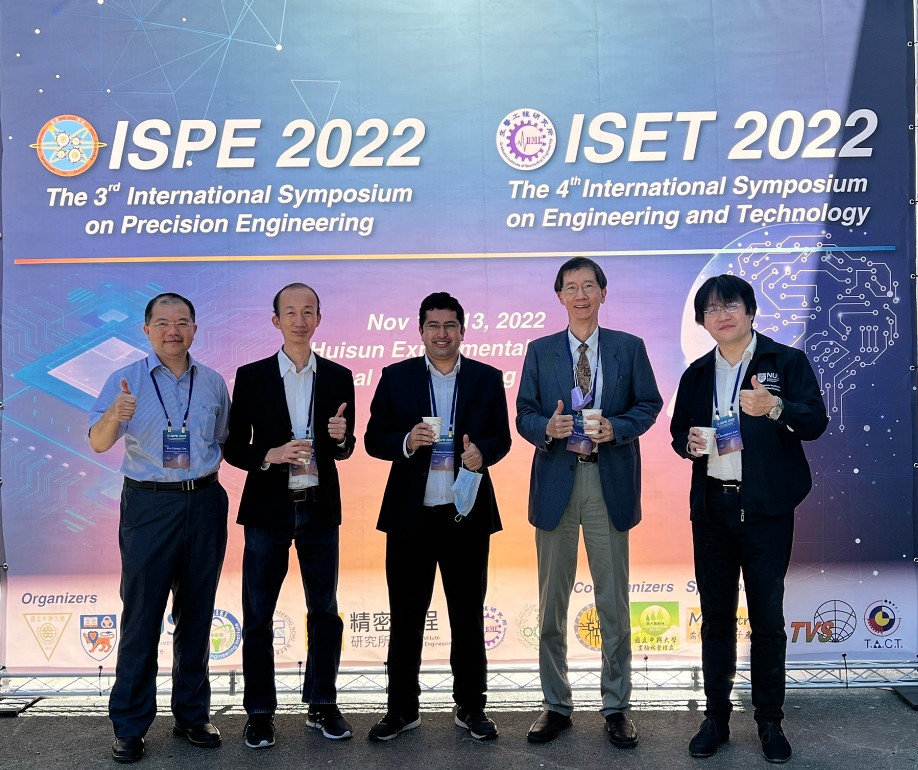
Group photo of the scholars

Predicting effective thermal conduction and mechanical
behavior of porous structures
Presented by Yu-Lin
Shen
University of New
Mexico, U.S.A.

Functional Atomic Composite: A New Prospect of MICAtronics
Presented by Ying-Hao Chu National
Yang Ming Chiao Tung University, Taiwan
National Yang Ming Chiao Tung University, Taiwan
scene of the oral
sessions
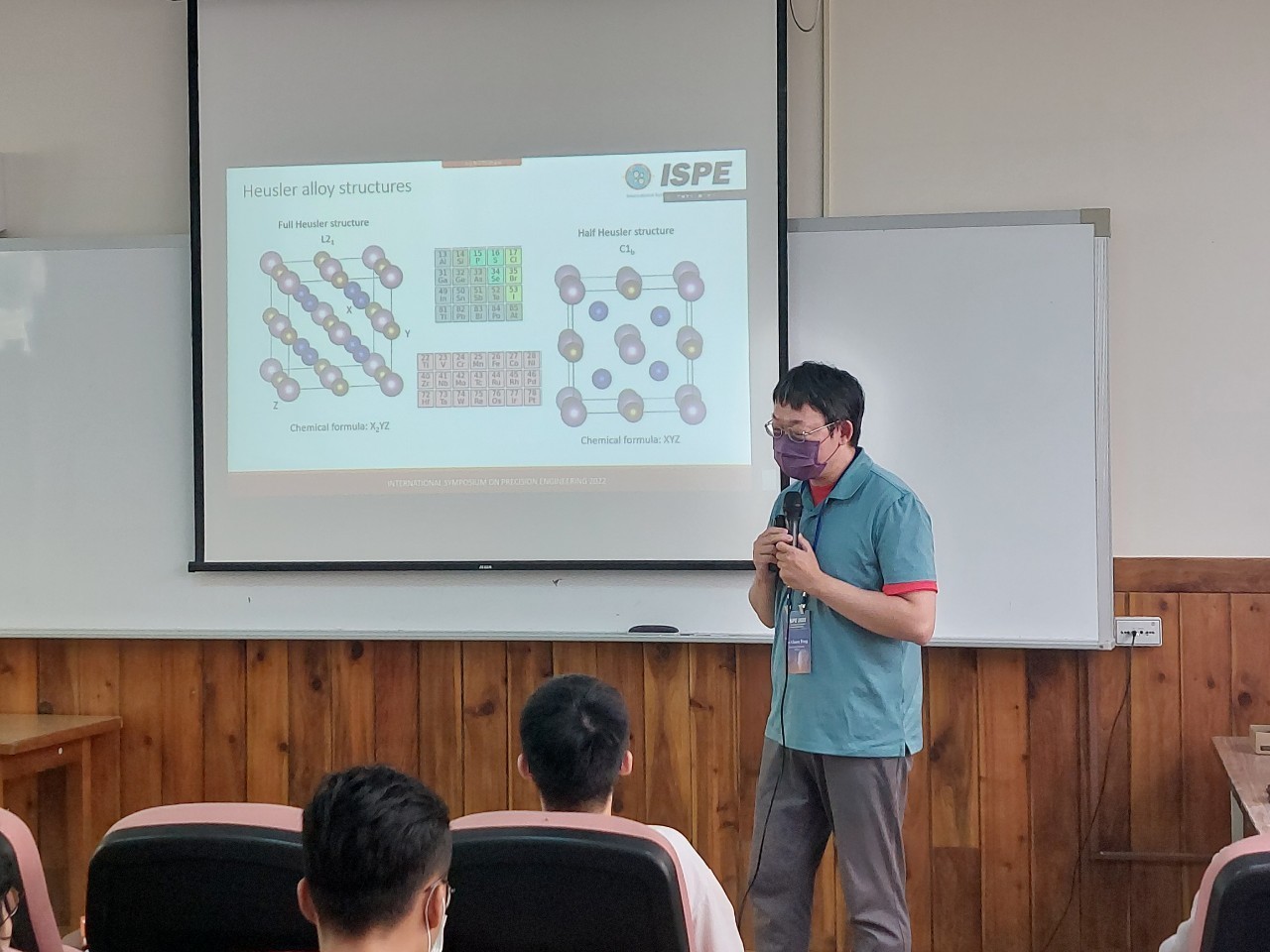
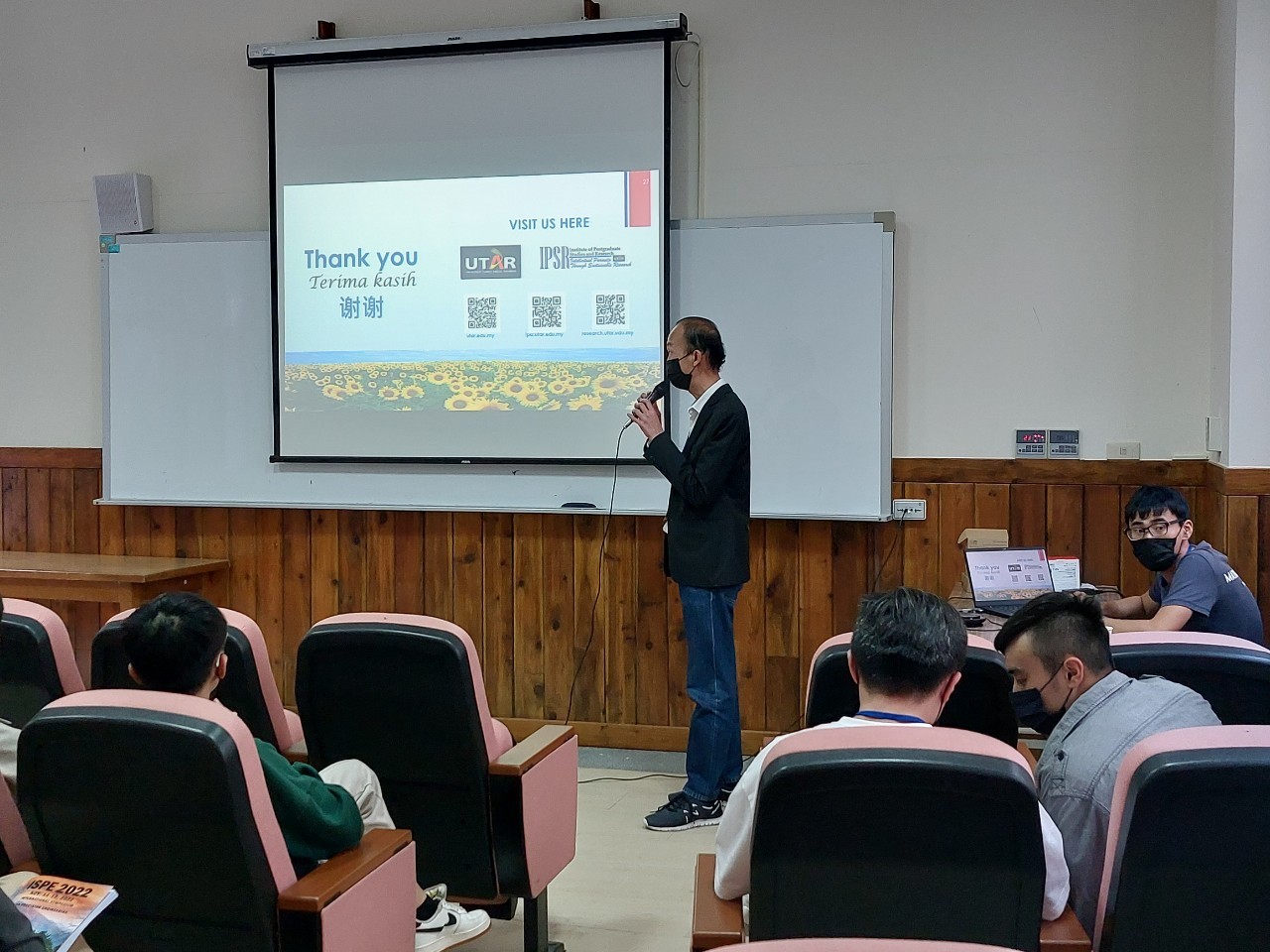
Poster Exhibition Area

Outstanding oral presentation award in ISPE 2022 are announced
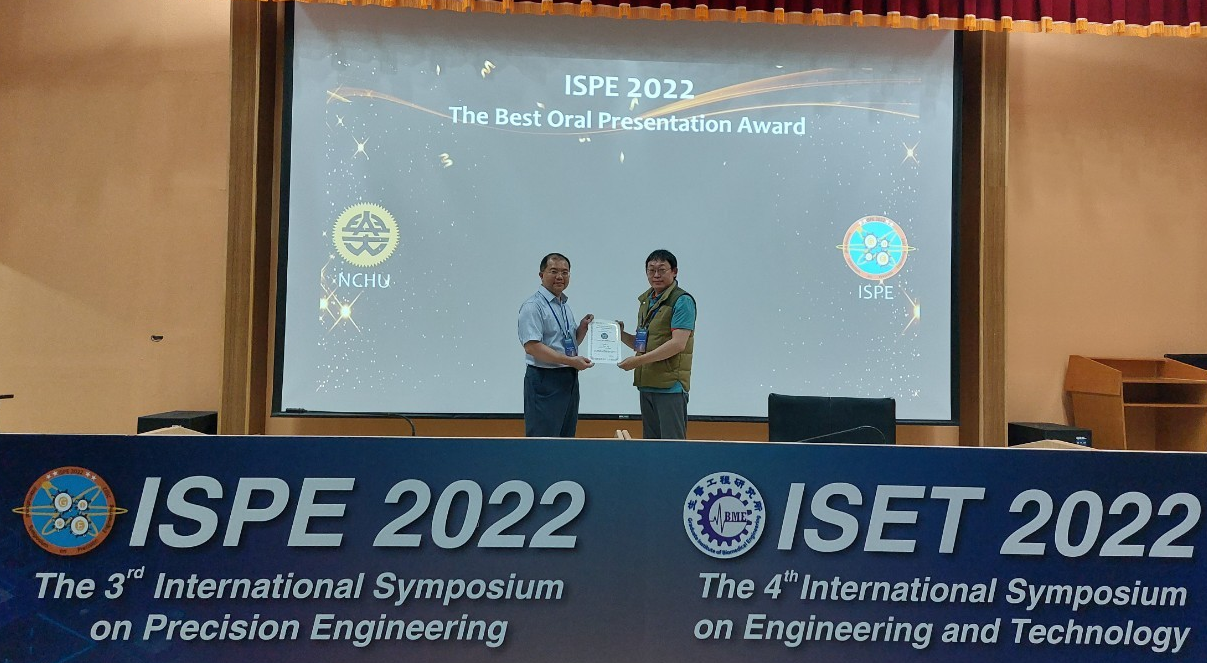
Hung-Lung Huang, Jen-Chuan Tung, and Horng-Tay Jeng*,
“A First-Principles Study on the Effect of Cr, Mn, and Co Substitution on
Fe-Based Normal- and Inverse-Heusler Compounds: Fe3-xYxZ (X= 0, 1, 2, 3; Y=Cr,
Mn, Fe, Co; Z=Al, Ga, Si)”, The 3rd International Symposium on Precision
Engineering 2022, ISPE 2022, Oral No. O-1, Excellent Oral Award, Huisun
Experimental Forest, Nantou County, Taiwan, November 11~13, 2022.

Chih-Liang Wang, “Development Prospects of ALD
Technology in Energy Applications”, The 3rd International Symposium on Precision
Engineering 2022, ISPE 2022, Oral No. O-3, Excellent Oral Award, Huisun
Experimental Forest, Nantou County, Taiwan, November 11~13, 2022.

Hoang-Quy Le*, Shyh-Tsong Lin, You-Yi Chen, and Zhe-Wei Lin, “Thin-film
thickness assessments with the use of a common-path interferometer”, The 3rd
International Symposium on Precision Engineering 2022, ISPE 2022, Oral No. O-7,
Excellent Oral Award, Huisun Experimental Forest, Nantou County, Taiwan,
November 11~13, 2022.

Tri-Hieu Nguyen, and Dung-An Wang*, “Design and Fabrication of A Torque Sensor
with Applications in Robot Skin and Joint”, The 3rd International Symposium on
Precision Engineering 2022, ISPE 2022, Oral No. O-10, Excellent Oral Award,
Huisun Experimental Forest, Nantou County, Taiwan, November 11~13, 2022.
Outstanding poster presentation award in ISPE 2021 are announced

Chao-Chun Yen, Hsin-Yu Chou, Anoop Kumar
Singh, Po-Wei Wu, and Dong-Sing Wuu*, “Effects of the TiN Hetero-buffer Layer in
Radio Frequency Magnetron Sputtered β-Ga2O3 Films on Si Substrate”, The 3rd
International Symposium on Precision Engineering 2022, ISPE 2022, Poster No.
P-19, Excellent Poster Award, Huisun
Experimental Forest, Nantou County, Taiwan,
November 11~13, 2022.

Yu-Cheung Chen, Hsin-Hung Lee, and Cheng-Mu Tsai*, “Prediction of Local
Optimization Algorithm in Lens Design by Using Deep Learning”, The 3rd
International Symposium on Precision Engineering 2022, ISPE 2022, Poster No.
P-13, Excellent Poster Award, Huisun Experimental Forest, Nantou County, Taiwan,
November 11~13, 2022.

Jia-Xian Liao, Yu-Hsuan Cheng, Yo-ping Greg Wu*, and Ya-Fen
Lin, “Combustion Characteristics of Densified Refuse Derived Fuel Produced from
Rice Straw”, The 3rd International Symposium on Precision Engineering 2022, ISPE
2022, Poster No. P-18, Excellent Poster Award, Huisun Experimental Forest,
Nantou County, Taiwan, November 11~13, 2022.
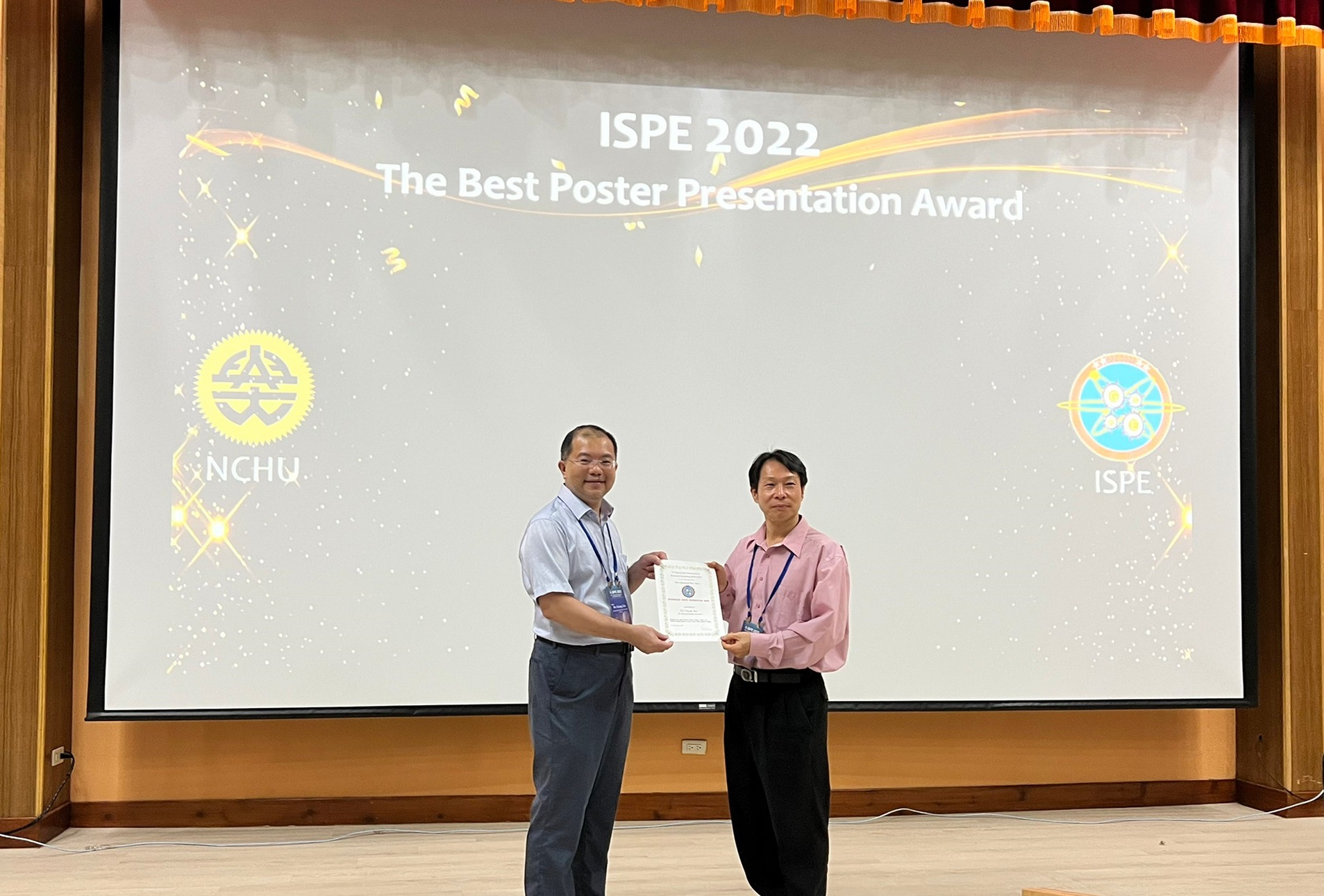
Chil-Chyuan Kuo*, and Qing-Zhou Tasi,
"Development of a Rapid Mold with Conformal Heating Channel and
Conformal Cooling Channel for Liquid Silicone Rubber Injection Molding", The 3rd
International Symposium on Precision Engineering 2022, ISPE 2022, Poster No.
P-2, Excellent Poster Award, Huisun Experimental Forest, Nantou County, Taiwan,
November 11~13, 2022.
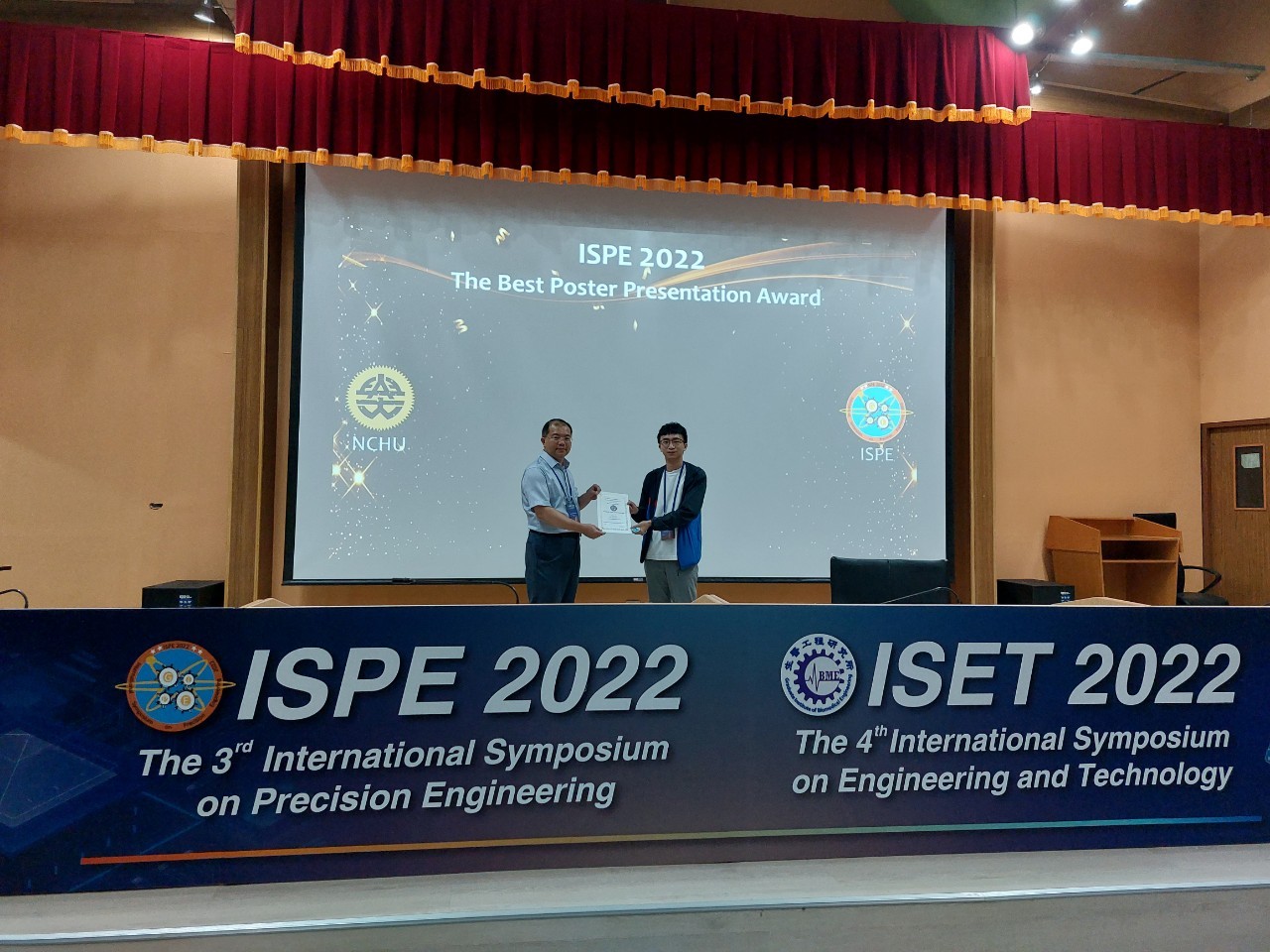
Chih-Yang Huang , Yun-Sheng Li , Tarntair , and
Ray-Hua Horng2,* "Deep UV PD performance improvement by UV-ozone surface
treatment", The 3rd International Symposium on Precision Engineering 2022, ISPE
2022, Poster No. P-2, Excellent Poster Award, Huisun Experimental Forest, Nantou
County, Taiwan, November 11~13, 2022.
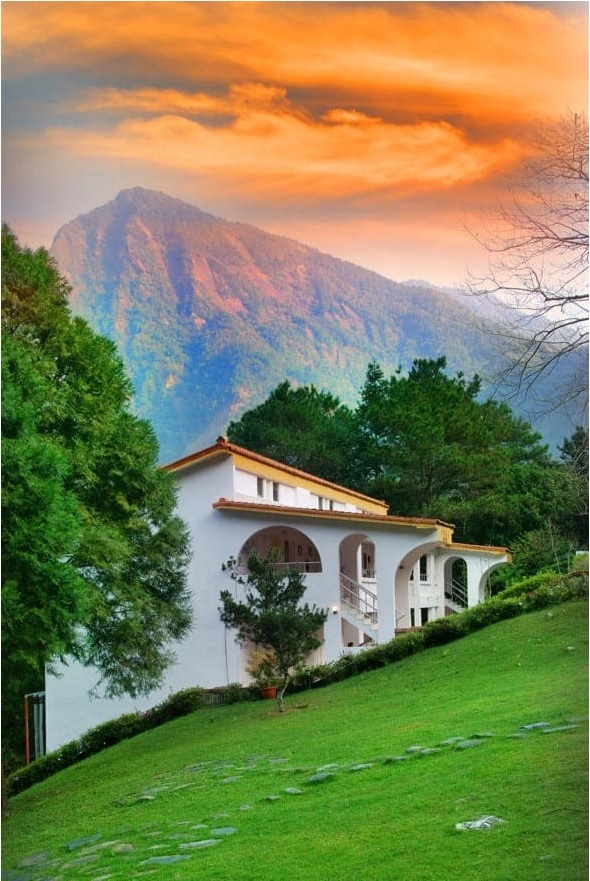
Huisun Experimental Forest Station
Huisun experimental forest station . The forest, 7,477 ha in area, is
situated at Nantou county, Taiwan, approximately 35km to the east of
Taichung city. It is the largest experimental forest among the 4 belonging
to the National Chung Hsing University. Due to the 2000-meter altitude
difference in Huisun, from 450-2,420 m, the forest is longitudinally
scattered between peak and valley, and so the main features of the climate
can be divided into tropical, subtropical and warm regions. Each region
consists of a variety of vegetation with adaptive plants. The varieties of
plants in the 3 regions is a result of the multi-variety ecological system.
Location
Conference Room of Huisun
Experimental Forest Station
Address : No.1, Shanlin Lane, Renai Township, Nantou County 546, Taiwan
How to get to the
Venue
Option 1:
By using our free shuttle bus service.
Pick-up location is at Taichung High Speed Rail Statio or National Chung Hsing
University

Option 2:
By public transportation. Take the Taiwan High Speed Rail, the local train, or
bus to Taichung Station. Continue by Nantou Bus to Puli stop.Then take the
Nantou Bus to Huisun stop.
Option 3:
By Private Vehicle.
Nat'l Hwy  →
Changhua System Interchange → Nat'l Hwy
→
Changhua System Interchange → Nat'l Hwy  →
Wufeng System Interchange
→
Wufeng System Interchange
→ Nat'l Hwy  →
Exit at the Puli Interchange → Prov. Hwy 21 → Tou-80 County Road
→
Exit at the Puli Interchange → Prov. Hwy 21 → Tou-80 County Road
Registration Fee
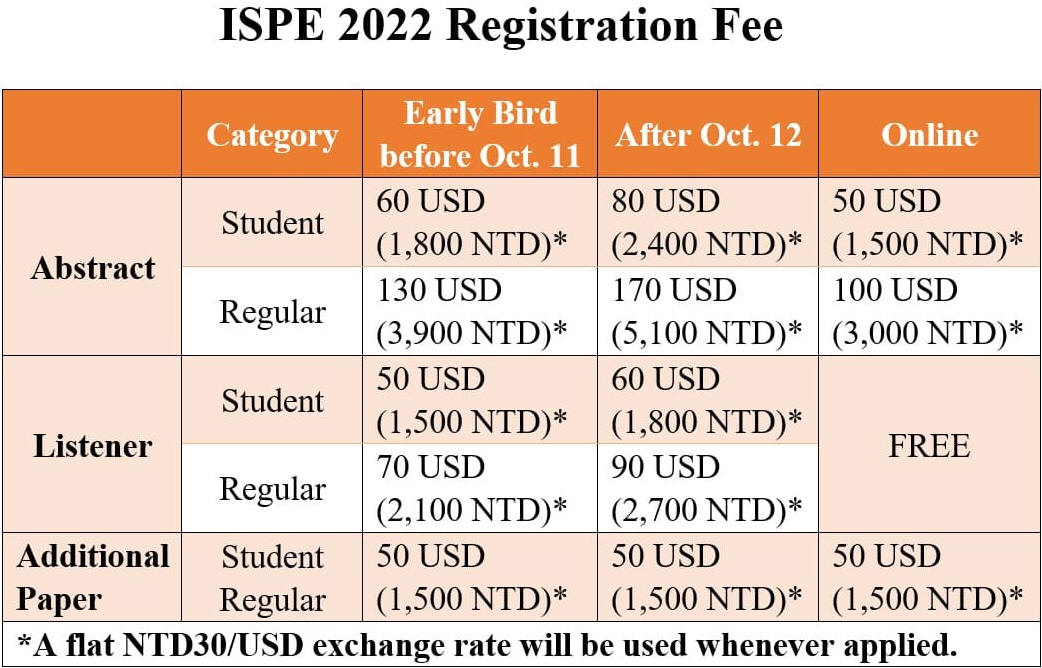
Note:
• One regular registration can publish a paper.
• Student fee is ONLY applicable for the student who is the FIRST author.
• Additional paper registration precondition: The registered author should be
the first authors in both papers.
• All conference attendees must register. Personal badges will be provided to
identify registered participants.
• If you would like to attach additional paper submissions, please add them at a
fee of 50 USD (1,500 NTD) per paper when paying the fee.Abstracts Registration
Fee .
• 15 minutes Oral presentation / Poster Presentation
• Conference program
• Attendance to all sessions
• Name tag
• Certificate of presentation
• Conference bag
• Lunches, coffee breaks and Banquet
Online Registration Fee Includes:
• 15 minutes Oral presentation / Poster Presentation
• Conference program
• Attendance to all sessions
• Electronic certificate of presentation
Listener Registration Fee
Includes:
• Conference program
• Attendance to all sessions
• Name tag
• Certificate of attendance
• Conference bag
• Lunches and coffee breaks
Refund/Cancellation Policy
If a registrant is unable to
participate in the event for any reason, he or she can replace other co-authors
or other people from the same institution/organization through arrangements with
the registrar. A written request for cancellation must be sent to the
conference secretary via email
nchugipe@gmail.com.
In case of
cancellation, partial cancellation or modification, the following fees will be
charged:
• Cancellation up to 90 days prior to event date : Free of charge
• 89-30 days prior to event date : 50% processing fee is required
• 29-0 days prior to event date : No refund
No Show
If the author does not appear, the registration fee will not be refunded.
Speakers

Chair Prof. Yu-Lin Shen
Department of Mechanical Engineering
University of New Mexico, U.S.A.
Title
of Plenary Speech
Predicting effective thermal conduction and mechanical behavior of porous
structures
Abstract of Plenary Speech
Materials containing internal pores are ubiquitous in structural components and
functional devices. Metamaterials and lattice structures, fabricated by additive
technologies, also incorporate regular empty space into their design.
Understanding how the geometic configuration of the pores affects the overall
material properties calls for systematic analyses. In this presentationwe
highlight our recent developments of numerical models to predict the effective
thermal conductivity and mechanical behavior of porous structures, with
attention devoted to various shapes (aspect ratios), sizes, and periodic spatial
distributions of the existing voids. Starting with the simplest case with one
pore per unit cell, we gradually increase the level of complexity of the
geometric model. When the aspect ratio of the pores deviates from unity,
anisotropy becomes important and the underlying geometry plays an increasing
role in dictating the overall material behavior. The internal pores become
embedded cracks in the limiting case, which can be analyzed using the same
methodology. Insights gained from the theoretical consideration have direct
implications in the design and performance evaluation of pore-containing
structures.
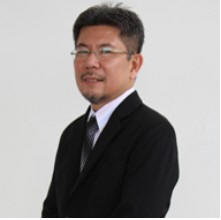
Prof. Kahar Bin Osman
Faculty of Engineering
University Teknologi Malaysia, Malaysia
Title of Plenary Speech
Stents and Additive Manufacturing
Abstract of Plenary Speech
Medical practitioners have been using stents to overcome
the constriction of arteries or to maintain certain lumens in our body. Stents
themselves have been around for more than 40 years and have seen significant
developments in their fabrication techniques. Moving from metal based stents,
currently, polymers have also been used to produce stents. After bare metal
stents, drug eluting stents and bioresorbable stents are also being implanted.
Fabrication techniques have also been improved to produce better and cost
effective stents. Currently, efforts have been expanded to use 3D printing as
one of the alternatives in stents fabrications. Reports have shown that additive
manufacturing have been used to attempt to fabricate cardiovascular stents but
issues related to their reduced qualities were mentioned. This talk will compare
two products of Direct Metal Laser Sintering for tracheal stents. The final
products show that, with improvement in the design, better and stronger stents
can be produced. However, other qualities of the stents need more investigation.
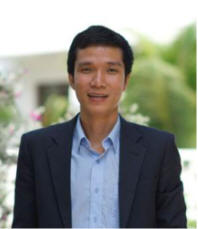
Prof. Vòng Bính Long
School of Biomedical Engineering
DeInternational University, Vietnam National University Ho Chi Minh, Vietnam
Title of Keynote Speech
Design of antioxidant self-assembled nanomedicine for oral drug delivery system
Abstract of Keynote Speech
Since oral administration is preferable for patients to improve their quality of
life, it is very essential if drugs, which are only approved by injection, can
be extended to oral medication. This is the reason that many reports have been
published using nanoparticle-assisted oral drug delivery system (DDS); however,
they have remained many challenges. In order to overcome the drawbacks of oral
DDS, we designed an original silica-containing antioxidant nanocarrier (siRNP),
which was prepared by the self-assembly of an amphiphilic block copolymer
(PEG-b-siPMNT) possessing a poly(ethylene glycol) (PEG) shell as a hydrophilic
segment and ROS-scavenging nitroxide radical and silica moieties in the
hydrophobic core. There are several points to improve the effectiveness of oral
DDS by siRNP as follows: i) Polymer micelle-based design: Since the hydrophobic
segment of the amphiphilic block copolymer is composed of PEG, the densely
packed brushes on the nanoparticle surface improve its dispersion even under the
harsh GI tract conditions, preventing nanoparticle aggregation and keeping its
small sizes, and improving accumulation in the intestinal mucosa. we have
previously confirmed that the core-shell type polymer micelles improved the
accumulation tendency in the intestinal mucosa by almost two orders of magnitude
than that of commercially available polystyrene nanoparticles although they are
initially the same size before the oral administration; ii) Silica installation
in the core of RNP: Several nanometer-sized silica in the core of RNP increased
the stability of the self-assembling polymer micelles (RNP) by the crosslinking
of the block copolymer chain to each other, which prevents disintegration and/or
coagulation of the nanoparticle and further improve accumulation in the
intestinal mucosa; iii) Another effect of the silica crosslinking: The
installation of silica in the core of RNP also improves the drug loading
capacity by drug adsorption on the porous silica surface in the core, preventing
the leakage of the drug from the carrier; iv) Installation of nitroxide radicals
in the core of nanocarrier: The installation of nitroxide radicals in the core
via the covalent conjugation increases antioxidant character of nanocarrier. The
covalent linkage prevents leakage of the antioxidants and ensures its safety.
Recently, we have investigated that siRNP significantly improved the
bioavailability of conventional hydrophobic drugs. The orally administered
drug@siRNP effectively suppressed the intestinal inflammation and cancer, liver
fibrosis, and minimized the adverse effects of conventional drugs.
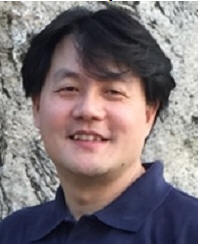
Prof. Cheng-kuo Lee
Department of Electrical and Computer Engineering
National University of Singapore, Singapore
Title of Invited Talk
AI-Enhanced Nanosensors for Environmental Monitoring, Smart Home
and Metaverse
Abstract of Invited Talk
In the Internet of Things (IoT) era, various devices (e.g., sensors, actuators,
energy harvesters, etc.) and systems have been developed toward the realization
of self-sustained IoT sensor nodes for smart homes/ buildings and environmental.
The surface-enhanced infrared absorption (SEIRA) spectroscopy provides lattice
and molecular vibrational fingerprint information which is directly linked to
the molecular constituents, chemical bonds, and configuration. The nanosensors
using Infrared (IR) plasmonic nanoantennas (PNAs) are powerful tools to identify
molecules by the IR fingerprint absorption from plasmon-molecules interaction
based on the SEIRA spectroscopy technology. Secondly, the nanophotonic
waveguides that implement long optical pathlengths on silicon photonics chips
have been investigated as promising gas sensors for the weak interactions with
gas molecules in the infrared absorption (SEIRA) spectroscopy as well. By
leveraging large longitudinal electric field discontinuity at periodic
high-index-contrast interfaces in subwavelength grating metamaterial and its
unique features in refractive index engineering, a nanophotonic waveguide sensor
achieves acetone absorption spectroscopy at 7.33 μm, showing a detection limit
of 2.5 ppm with a waveguide length of only 10 mm. The artificial intelligence
(AI) technologies push forward the development of diversified smart nanosensors
in order to realize the advanced artificial intelligence of things (AIoT)
technology. Furthermore, the recent advances in the combination of AIOT based
nanosensors in the human machine interfaces (HMI) and innovative micro-haptic
technology will provide the excellent immersive user experience in the future
metaverse.

Prof. Bhaskar Kanseri
Experimental Quantum Interferometry and Polarization (EQUIP),
Department of Physics, Indian Institute of Technology Delhi, New Delhi, India
Title of Invited Talk
Quantum secure communication: Activities and prospects
Abstract of Invited Talk
Quantum optics offers a framework to test fundamental
aspects of quantum mechanics such as coherence, entanglement, and non-classical
properties of light. More recently, it has led to the development of quantum
technologies which aim to harness quantum principles for promising applications
in computing, communication and precision metrology. This area has evolved
significantly in recent years, and this year Physics Nobel prize has also been
awarded for ground breaking experiments in these domains. Quantum key
distribution (QKD) is a method of quantum cryptography, which has become a new
generation security solution and does not rely on the computation assumptions of
problems presumed difficult. This talk will begin with several key aspects of
fibre and free-space quantum secure communication and would further highlight
efforts being made by our group at IIT Delhi for both research and development
in these areas. One of our studies also focuses for exploring the effects of
partial coherence on spatial profile, polarization entanglement and squeezing
features of biphotons. These non-classical photon beams having partially
spatially coherent features can be more robust against atmospheric losses and
turbulence compared to their fully coherent counterparts, offering a way to
achieve higher key rates in quantum communication applications. Some
implementations of QKD in lab scale and in field would also be discussed. The
prospects of photonic quantum technologies would also be highlighted emphasising
on field deployable devices for QKD and hybrid quantum networks for future
quantum internet.
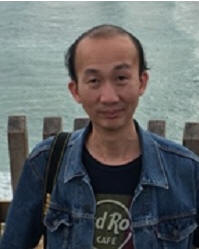
Assoc. Prof. Dr. Jun Hieng Kiat
Department of Mechanical and Material Engineering
Universiti Tunku Abdul Rahman, Malaysia
Title of Invited Talk
All-weather solar cell incorporating long persistent phosphors and carbon
Abstract of Invited Talk
Solar energy has gained much research interest due to its attractive feature and
low fabrication cost. It also does not produce CO2 emission during the energy
conversion. However, the main issue of solar energy is its inability to generate
electricity when there's no light irradiation. Therefore, development of
all-weather solar cell is proposed. The device is designed to generate
electricity during day and nighttime. In this work, a simple methodology to
fabricate all-weather dye-sensitized solar cell (DSSC) is presented. The
electrode of the DSSC was doped with green-emitting long persistent phosphors
(LPP) and carbon quantum dots (CQD) in order to provide the photoenergy
conversion functionality under dark condition. The fabricated DSSC was able
produce a power conversion efficiency of 3.22% under dark along with consistent
power output for at least 30 minutes. The light emission under dark is made
possible by the LPP where the absorbed light during light irradiation is
released as green photo fluorescence when the light source is removed. This work
represents a step forward for the improvement of versatile DSSC.
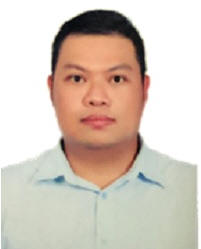
Prof. Ngoc Dang Khoa Tran
Faculty of Mechanical Engineering
Industrial University of Ho Chi Minh City, Vietnam
Title of Invited Talk
Design the compliant tristable mechanism with two different bistable mechanisms
Abstract of Invited Talk
This study presents a new method to design a compliant mechanism with three
distinct motion positions. The connection of a frame mass constructs the
mechanism, and two bistable mechanisms have two stable positions. Each of the
two stable mechanisms worked based on the tension and compression of the
flexible element. The combination of the two bistable mechanisms with different
behavior accurately predicts the tristable mechanism's characteristics. The
finite element method is employed to analyze the compliant bistable mechanisms
and tristable mechanisms. The results show the maximum forces of the tristable
mechanism close to the maximum force of the bistable mechanism and easily
predict the stable position of the tristable mechanism based on the stable
position of each bistable mechanism. The frame mass's stiffness causes the
maximum force error. This method is investigated against several tristable
mechanism designs to demonstrate its effectiveness.

Dr. Nabila A. Karim
Fuel Cell Institute,
University Kebangsaan Malaysia, Malaysia
Title of Invited Talk
Calcium Carbonate from Chicken Eggshells as Filler in Composite Nafion Membrane
for Direct Ethanol Fuel Cell: A Molecular Dynamics Studied
Abstract of Invited
Talk
The problem of ethanol cross-over from anode to cathode reduces the overall
performance in the Direct Ethanol Fuel Cell (DEFC). Therefore fillers are used
to reduce the problem of ethanol cross-over. Therefore, this study developed
calcium carbonate (CaCO3) from Chicken Eggshells as Filler in Nafion Membrane
Composite for Direct Ethanol Fuel cells. Three clusters of CaCO3 are formed as
filler in the Nafion membrane, namely as (CaCO3)2, (CaCO3)3 and (CaCO3)4 and
conducted using the Molecular Dynamics method to determine properties of the
composite membrane, namely ion conductivity, ethanol permeability and selectivity.
Three main factors influencing the three composite membranes were tested in this
study: cluster size of CaCO3, filler loading in wt% and ethanol concentration.
The presence of filler has reduced ethanol permeability in DEFC application
compared to the Nafion membrane. Selectivity is used to balance the properties
of ion conductivity, and ethanol permeability as these two properties are very
important to improve the overall performance of DEFC. A3%-1M, B3%-1M and C3%-1M
have lower ion conductivity than the Nafion membrane, but all three composite
membranes have higher selectivity
than the Nafion membrane. All three composite membranes are suitable for use at
low ethanol concentrations. Composite membrane C ((CaCO3)4) is required to
restrict ethanol permeability at a high ethanol concentration of 5 M. Large
structure size in cluster (CaCO3)3 can reduce ethanol permeability but requires
loading (CaCO3)3 by 5wt%. ANOVA analysis showed significant values for the three
responses of ion conductivity, ethanol permeability and selectivity.




























